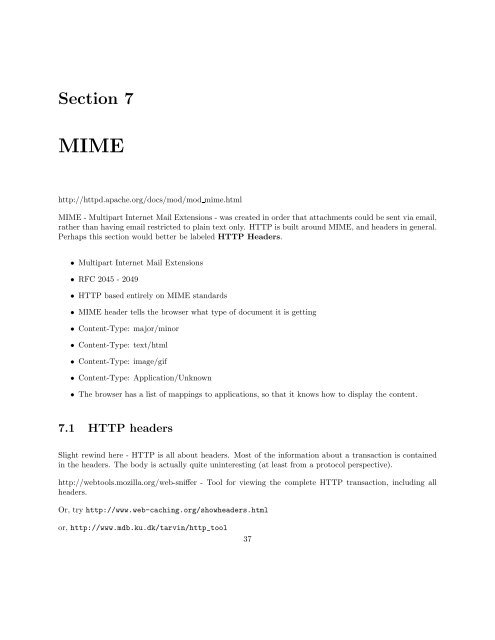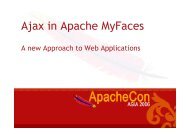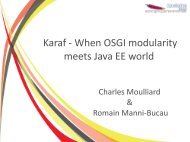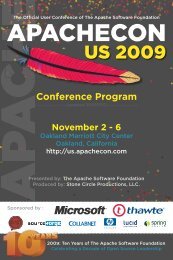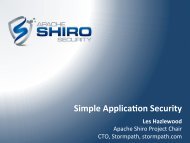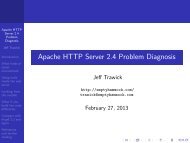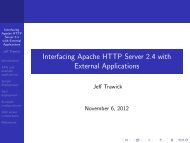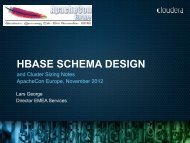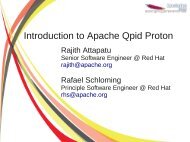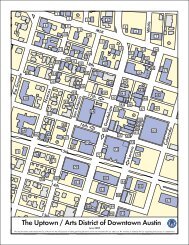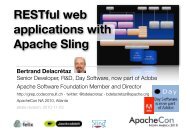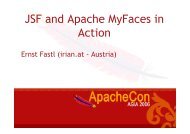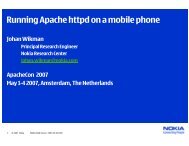Introduction to the Apache Web Server - ApacheCon
Introduction to the Apache Web Server - ApacheCon
Introduction to the Apache Web Server - ApacheCon
Create successful ePaper yourself
Turn your PDF publications into a flip-book with our unique Google optimized e-Paper software.
Section 7<br />
MIME<br />
http://httpd.apache.org/docs/mod/mod mime.html<br />
MIME - Multipart Internet Mail Extensions - was created in order that attachments could be sent via email,<br />
ra<strong>the</strong>r than having email restricted <strong>to</strong> plain text only. HTTP is built around MIME, and headers in general.<br />
Perhaps this section would better be labeled HTTP Headers.<br />
• Multipart Internet Mail Extensions<br />
• RFC 2045 - 2049<br />
• HTTP based entirely on MIME standards<br />
• MIME header tells <strong>the</strong> browser what type of document it is getting<br />
• Content-Type: major/minor<br />
• Content-Type: text/html<br />
• Content-Type: image/gif<br />
• Content-Type: Application/Unknown<br />
• The browser has a list of mappings <strong>to</strong> applications, so that it knows how <strong>to</strong> display <strong>the</strong> content.<br />
7.1 HTTP headers<br />
Slight rewind here - HTTP is all about headers. Most of <strong>the</strong> information about a transaction is contained<br />
in <strong>the</strong> headers. The body is actually quite uninteresting (at least from a pro<strong>to</strong>col perspective).<br />
http://web<strong>to</strong>ols.mozilla.org/web-sniffer - Tool for viewing <strong>the</strong> complete HTTP transaction, including all<br />
headers.<br />
Or, try http://www.web-caching.org/showheaders.html<br />
or, http://www.mdb.ku.dk/tarvin/http_<strong>to</strong>ol<br />
37


